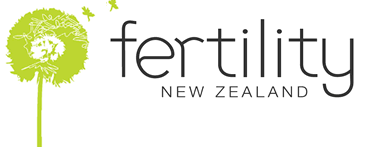Surplus Embryos
Surplus embryos are frozen embryos which remain after people have decided that their family is complete – the embryos are surplus to their own needs. They are a chance outcome of fertility treatment.
People undergoing fertility treatment are typically focussed on getting the best chance of having a baby. Usually, the number of viable embryos at the completion of a treatment cycle is limited by natural attrition along the IVF process, from egg collection, fertilisation, and embryo development. An alternative to the possibility of having surplus embryos is to have one egg fertilised at a time and for surplus eggs to be frozen, but this makes the IVF process more expensive and does have implications for chances of success. Another option is not to freeze ‘spare’ embryos, however this also limits the chance of success.
An IVF cycle usually involves selecting the best embryo to transfer into the woman’s uterus. Typically, any embryos remaining from the cycle will be frozen and may be used if a live birth did not result from the first embryo, or if further children are desired.
Sometimes, a family will be completed without all frozen embryos being used. This situation is becoming increasingly common as clinics continually improve success rates. People with frozen embryos will be contacted by the clinic each year to ask if they wish to renew storage of their embryos, for which there is an annual fee.
Emotional considerations
When people are trying-to-conceive, they are typically focused on achieving a pregnancy and a healthy baby. Needing to undergo fertility treatment in order to achieve a pregnancy requires physical and emotional (and sometimes financial) investment and there is often the sense of the treatment taking centre stage in your life. In situations where the journey is long and particularly difficult, the possibility of having surplus embryos at the end of treatment may be especially difficult to contemplate.
Potential embryo donors may feel differing levels of attachment to their surplus embryos. For some people, surplus embryos may feel like a representation of the journey that led to the creation of the embryos, and they are seen as highly valuable. Often too, questions of ‘when does life begin’, may come into decision making for many people contemplating what to do with surplus embryos. It is also not uncommon for partners to have differing views and for final decisions to take up to 2-3 years.
Embryo donation
Embryo donation has been described as ‘adoption with benefits’ and some countries even refer to it as ‘embryo adoption’. Although the recipient parents have no genetic link to the child, a prospective mother can achieve a biological link through pregnancy, childbirth and breastfeeding. Prospective recipients of donated embryos must have embryo donation recommended by a fertility specialist as medically being an appropriate option for them to have a child.
Embryo donation means that there could be full siblings growing up in a maximum of two families (this includes the donor family). Issues for people considering donating embryos include: their level of attachment to the embryos; reasons for wishing to donate versus discarding; relinquishment of control over the way that child would be raised; and the possible range of future relationships between children in the recipient and donor families. Implications counselling is essential for ensuring the best long-term outcome for all parties involved, especially the child(ren). A joint counselling session with donors and recipients is also a requirement for embryo donation in New Zealand, i.e. donors and recipients must meet.
Embryo donation is a complex process that requires case by case approval from the Ethics Committee on Assisted Reproductive Technology (ECART). There is a time commitment needed from all parties in this process, and a cost to potential recipients. ECART approval is required in all cases of embryo donation, even when it is a known donation between family members or friends. If you would like to donate your embryo(s), you should notify your clinic who will then attempt to match you with people who are seeking donor embryos. You have the right to restrict the donation to certain groups, such as geographical area or family type. Clinic counsellors will be able to assist with further information and support.
Legal framework
The Human Assisted Reproductive Technology (HART) Act 2004 limits storage of embryos to 10 years, at which point they must be discarded unless the person has obtained approval for extended storage from the Ethics Committee on Assisted Reproductive Technology (ECART). Clinics assist with this process of requests for storage extension.
Current options for surplus embryos in New Zealand are to donate them to others for use in fertility treatment, or discard them. Donating embryos for research is not currently an option in New Zealand. To either donate embryos or discard them requires the permission of both parties if the embryos were created by a couple. If the embryos contain donor gametes, the consent of the donor is required before the embryos can be donated but the donor’s consent is not required to discard.
ACART announced the publication of new guidelines for the donation of sperm, eggs and embryos and for clinic assisted surrogacy in September 2020. The new guidelines will enable people to seek fertility treatment using surrogacy or donations in a greater range of situations than before. The guidelines set out the requirements for assisted reproductive procedures that require a party other than the intended parents (third party assistance) to contribute to family formation and where a fertility services provider is involved. To read the new ACART guidelines click here.
Please contact your nearest fertility clinic counsellor for information and advice about the ECART application process.
